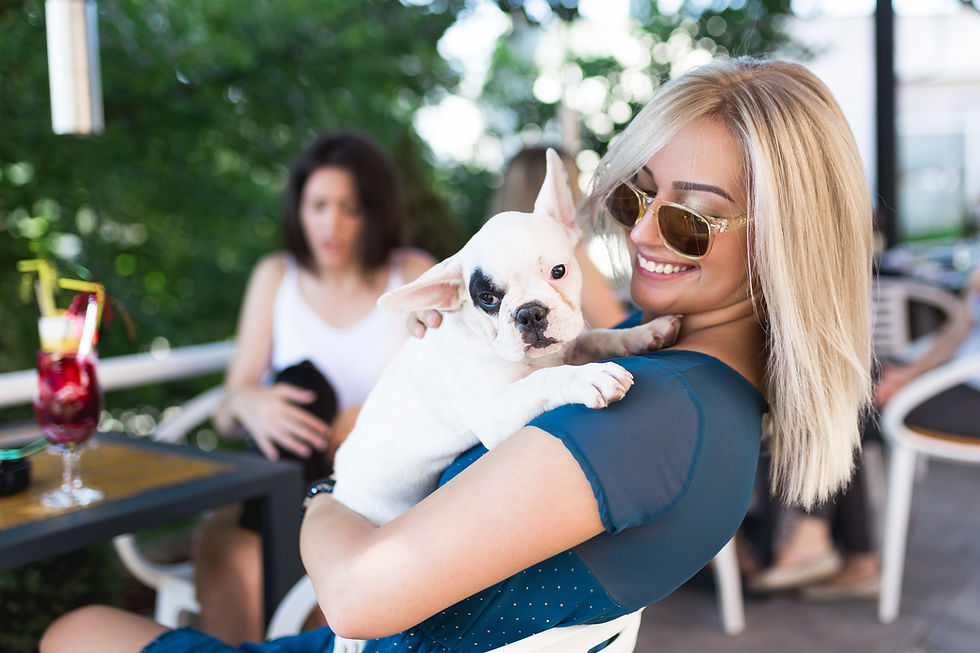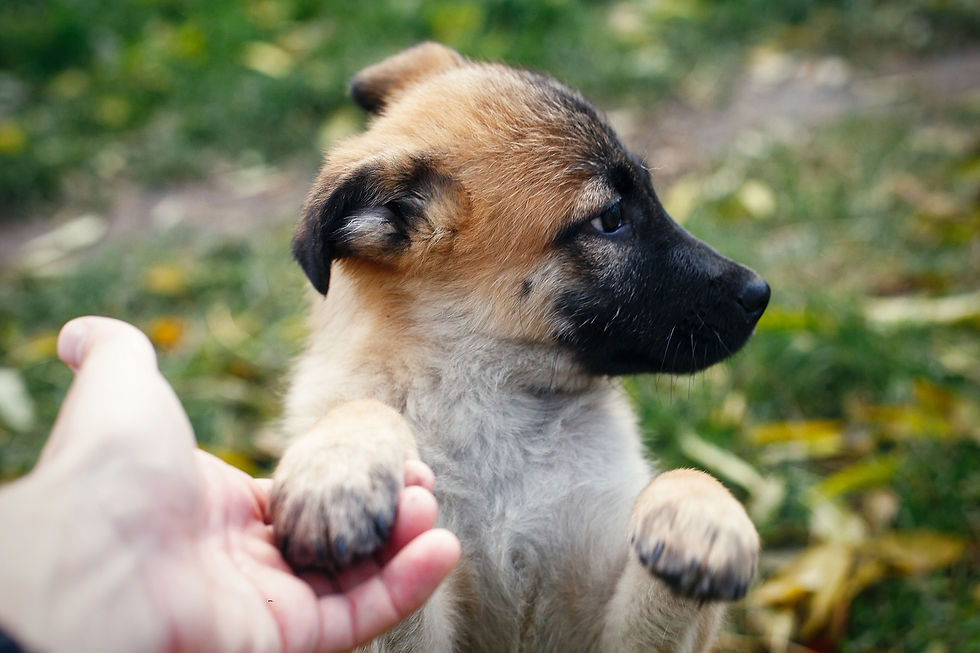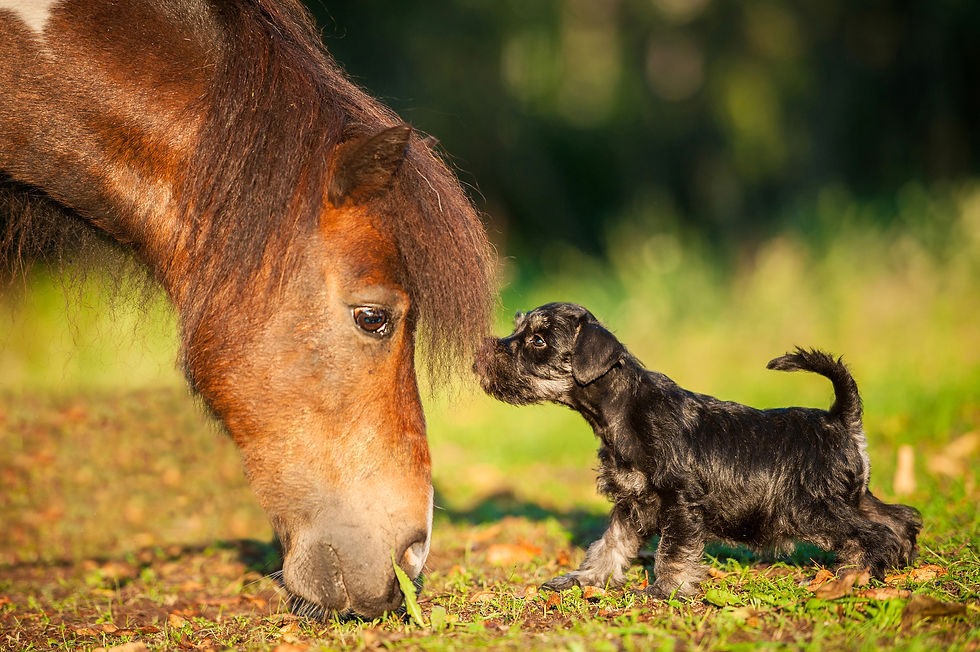Updated: May 13, 2020
May 19, 2019 © Hearts and Hounds Dog Training/

Socialization, or positive exposure to many new things, is one of the most important ways to set your puppy up for success and possibly avoid future behavioural issues such as aggression and reactivity. In Part I of our series, “Socialization: What You Need to Know,” we provided three basic rules of socialization to ensure the best chance of raising a happy, well-adjusted puppy who is confident and comfortable in almost situation she may encounter throughout her life. They are: 1) Start early; 2) Be safe; and 3) Be positive. Today, we'll discuss what to include in your socialization plan.
The American Veterinary Society of Animal Behavior states: “The primary and most important time for puppy socialization is the first three months of life. During this time puppies should be exposed to as many new people, animals, stimuli and environments as can be achieved safely and without causing overstimulation manifested as excessive fear, withdrawal or avoidance behavior.” So, what exactly should you be doing? We've broken it down into seven categories and provided several examples in each.
IMPORTANT NOTE: Exposure does not mean interaction; you should remain at a safe distance from any new stimulus; watch for signs of discomfort such as licking the lips, yawning when not tired, blinking, turning the head or body away, trying to get away, tucking the tail, ears back or down to the side, to name a few. If you notice any of these signs, remain calm and upbeat while moving your puppy farther away from whatever is causing the reaction.
PEOPLE
Having a puppy who is comfortable around a variety of people is arguably the most important benefit of socialization. Puppies and dogs who are afraid of people are at greater risk of biting, which can lead to relinquishment or, in severe cases, euthanasia. At the very least, walking a fearful dog generally makes outings in public less enjoyable for both the human and the dog. Since a puppy is like a magnet to many people, you’ll have ample opportunity to expose yours to a lot of them. Remember, however, that she does not need to meet every person who crosses her path. Choose different locations for the best chance of seeing many different types of people. Some suggestions are:
Mall parking lot — women, men and children of different ages, sizes, and ethnicities; people wearing items that alter their appearance such as hats, hoodies covering their head and possibly obscuring their face, glasses and sunglasses
Children’s playground — especially if you are not normally around small children; toddlers, especially, move in erratic ways which can be scary to a puppy
Construction site — people wearing hard hats, boots, reflective safety vests, big gloves
Hospital — people in uniforms; people using canes, crutches, walkers, wheelchairs
Parks — joggers, cyclists, skateboarders
Downtown — people carrying briefcases (or pulling rolling ones), backpacks, shopping bags, umbrellas
Remember to observe from a distance that is comfortable for your puppy if she is a bit shy and feed her yummy treats when she sees a stranger. For a social butterfly, you may encourage people to interact with her, even giving them treats to give her. Just be careful not to overwhelm her with constant greetings. Watch her body language for signs of discomfort as listed above.

HANDLING
You want your puppy to enjoy being handled. This will help immensely when you go to clip her nails, at the groomer, at the vet, and just being towelled off after a bath or being outside. Go from head to tail, touching each part of the body and giving a tasty morsel. Introduce her to the various things that might be used on her at the groomer or the vet such as nail clippers, brush, comb, ear wash, syringe. Start by simply showing her an item, let her sniff it and give her a treat. Gradually increase the degree of contact until you can use the item for its intended purpose.

ANIMALS
Possibly the second most important benefit of socialization is learning canine communication skills and how to interact with other dogs. Puppies do this through play with other puppies and adult dogs of different breeds with varying play styles. Puppy Socialization classes offer a safe environment to meet other vaccinated puppies. You can also set up play dates with other puppies and friendly adult dogs.
If you have other types of pets in your home such as cats, birds, guinea pigs, rabbits, ferrets, etc., make introductions safe by keeping the two animals separated at first; let them get the smell of each other, then allow interaction based on the comfort level of each. If you’re in the city, consider taking a drive out to the country to observe horses and farm animals (from a safe distance!).
SOUNDS
We have become accustomed to the variety of sounds of daily life, many of which we barely even register as we go about our day. To your puppy, many sounds they hear will be new to them and could be scary: traffic, construction noise, fireworks, children playing, loud music, heavy winds, thunder. As always, pair the sounds with lots of yummy treats. There are CDs available that play a variety of everyday sounds and some that focus on certain types of sounds such as fireworks and thunder.
ENVIRONMENTS
Take your puppy to lots of different places such as pet stores, shopping malls, your work, hotels, parks, playgrounds. Be sure to include the places they will need to go on a regular basis such as the veterinary clinic (drop in when your puppy doesn’t need something done; take the chance to get her weighed on their scale or up on an exam table and get treats from staff) and the groomer. In buildings, check out stairways, elevators, and the parking garage. Observe vehicles such as cars, buses, motorcycles, garbage trucks. If possible, check out boats, trains or even airplanes!

SURFACES
We often pay little attention to the surface below our feet, but our puppies need to be introduced to a variety of surfaces in order to feel comfortable on them: pavement, grass, sand, mud, gravel, puddles, snow, ice, metal grates, stairs. Look, too, for things that are unsteady or wobbly (this also helps with balance!).
AROUND THE HOUSE/YARD
There are many things in and around our homes that could frighten a puppy. The vacuum, for instance, is often quite big and heavy and it makes a loud noise. Your hair dryer also makes a sound and hot air comes out of it! When you put up an ironing board (I can’t remember the last time I did, but I’m sure some people still do!), there’s often a high-pitched squeak as the legs unfold. Many children’s toys also move and make sounds. Outside, you’ve got the lawn mower, weed eater, garden hose, sprinkler, and other tools that can be imposing in size and sound.
When creating your puppy's socialization plan, remember that socialization is about safely and positively introducing your puppy to things she is likely to encounter over her lifetime. Therefore, although it needs to start at a very young age, it never really ends. The more positive experiences your puppy or dog has, the easier it will be for her to handle new situations calmly and confidently.
Hearts and Hounds Dog Training offers Puppy Socialization classes in Vancouver. Your puppy will meet other puppies and people, explore novel items, learn to enjoy being handled for grooming and vet visits, and get started on basic foundation skills all in a fun and positive environment. And you’ll have all your burning questions about new puppy parenthood answered. Private coaching in your home is also available.
Now go have fun with your puppy!
Check out Part 1 of “Socialization: What You Need to Know” for the three basic rules of puppy socialization.
© 2017 Hearts and Hounds Dog Training. All Rights Reserved











